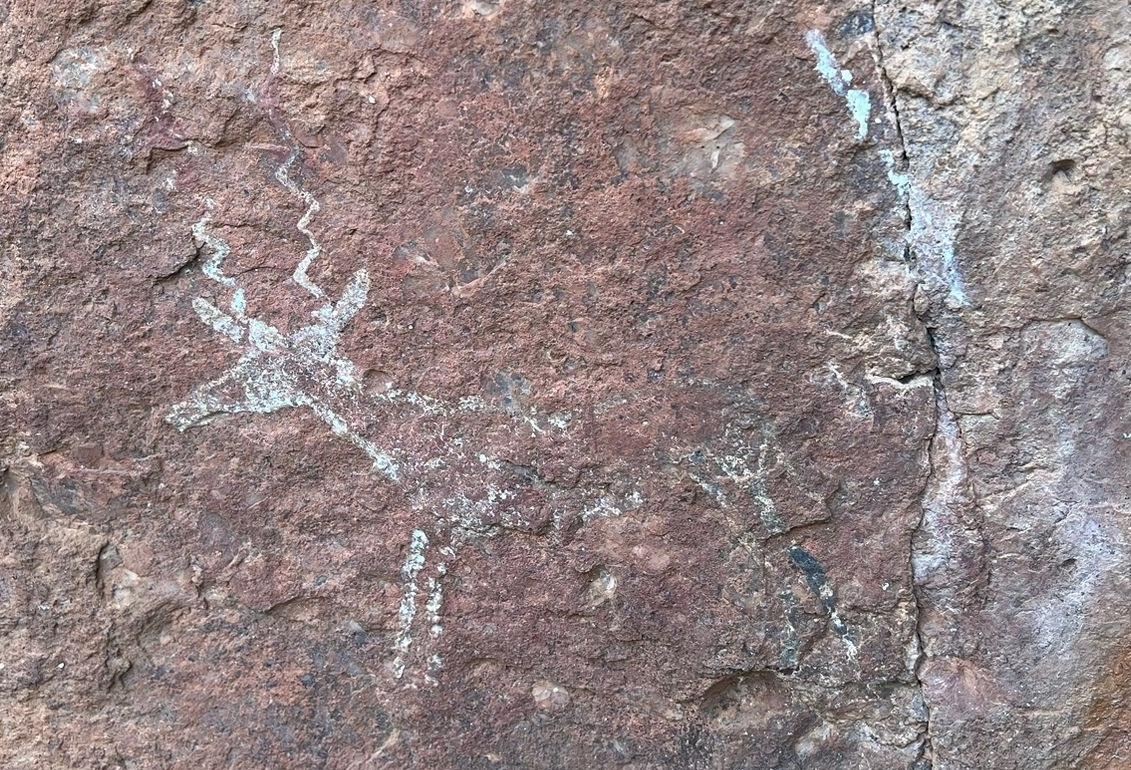
After the Middle Stone Age ended, 30 000 years ago, the Waterberg plateau was people-free until small groups of Bushmen hunter-gatherers, Bantu-speaking farmers, and Khoekhoe herders, trickled onto the landscape between 2000 and 1600 years ago. After about 1600, people flooded the Waterberg’s river corridors. The rock art must be read in the context of interaction between these immigrant hunter-gatherers, herders and farmers. Each group was aware of and influenced by the other. All groups comprised audiences that, on separate occasions, viewed serial, artistic performances on the rock stages. The performances were almost certainly mutually intelligible. Bantu-speaking boys were initiated in secluded, riverside rock shelters, and finger-painted art was a visual part of their instruction. Bushman iconography suggests that their boys were initiated, too. In each ceremony, ‘a great mystery’ was revealed to initiates. Bushmen boys were subjected to night-time wails, reportedly from a fearsome, unseen creature that longed to lick their blood. The secret that they later learned, but were not to share with the uninitiated, was that the howling ‘monster’ was simply a ‘bull-roarer’ (instrument made from a wooden or bone sliver attached to cord) whirled by a mentor in the dark. The boys were introduced to altered states of consciousness through deprivations and all-night dances. Every stage of the initiation aimed to transform the boy to a hunter capable of feeding a family and working with fellow hunters, but also a man psychologically able to become one with his prey. Both Bushman ethnography and the Waterberg art demonstrate that while meat and other products from ‘great meat animals’ were highly esteemed, the hunt and all actions connected with it embodied more spiritual than economic values. Transformation is the over-riding theme of the art; for example, animal/human transformations during altered states of consciousness, and the possibility that animal products, like karosses, were part of a conceptual transformation from boyhood to manhood.
Professor Lyn Wadley specialises in the African Middle and Later Stone Age. She has excavated many South African sites including Rose Cottage, Sibhudu, Border Cave and several in the Waterberg. She is especially interested in the cognition of people who lived in the Stone Age. Since many daily tasks performed by people in the past are potentially proxies for cognitive attributes, she has conducted experiments to replicate such activities. She has been on the Thomson-Reuters global list of the top 1% of highly cited researchers. She is a Fellow of the British Academy and Fellow of the Royal Society of South Africa. She taught archaeology at Wits University until her retirement but remains a research associate at the University. Rock art was the reason she became an archaeologist. She lives in the Waterberg and is recording this mountain art with Ghilraen Laue from the KwaZulu-Natal Museum. They are writing a book on Waterberg art; it will be published by Wits University Press.
- Date: Thursday, 11 April 2024
- Time: 19:30
- Venue: The Auditorium at Roedean School, 35 Princess of Wales Terrace, Parktown, Johannesburg
- Charge: Non-members R50, members free
Disclaimer: Any views expressed by individuals and organisations are their own and do not in any way represent the views of The Heritage Portal.
